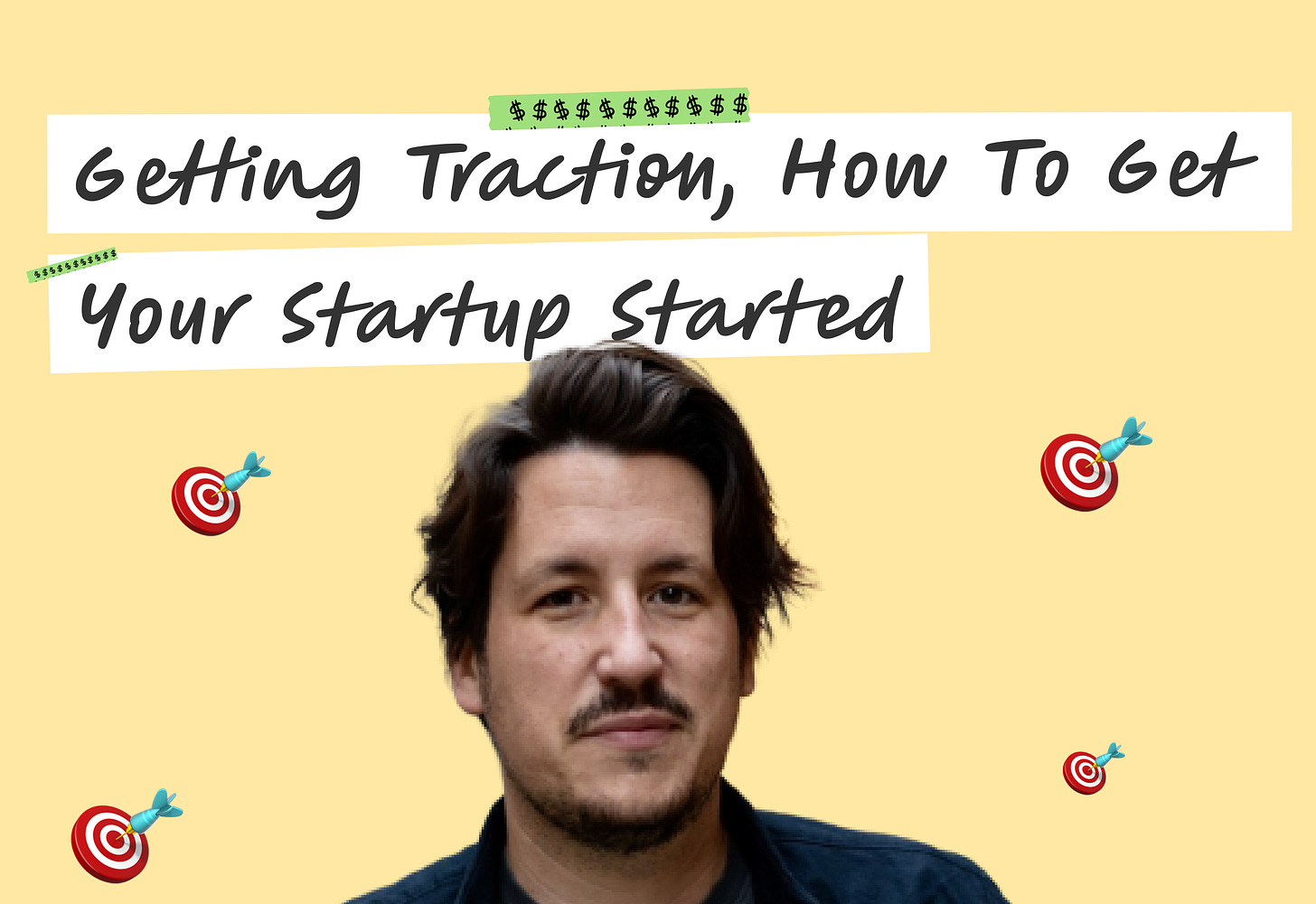Mastering Early Traction
Unlocking Early Traction: Navigating your Journey from 0 to we are alive
Have you ever gotten this investor question: “How will your product grow?”
You just started out and have a couple of users testing your MVP. The stage you are at is 0.01, and getting to 1 seems quite a journey ahead.
The investor is waiting for the answer…
You start talking about different channels and ways of acquiring customers. Then you tell them about all the grand plans and how you will develop your product into a platform.
That’s when I, as a former founder and investor, know you are in real trouble. But why?
Let’s dissect what traction is and means in the very first steps of a startup’s journey.
Traction
“Traction is the first desire that encourages customers to use your product.”
But how do I get these first customers?
It’s extremely helpful to have your own insights into the space and market you are building in.
If you don’t have the experience, get it!
Even if you have it, I deeply encourage you to get more insights.
Research and talk to as many people as possible about their problems to understand their Job-to-dones.
Here is my question framework for you to lead effective interviews:
Use this to kickstart your traction work:
Identify the Problem - Make them talk about the problems they are having.
How much does the problem hurt, make them rank the different problems. 1-5
Dig deep into the problem that hurt the most - Spend some time digging deeper into the biggest problems. Use the 5 Why’s to get to the root cause.
Today’s solution - Learn how the user solves their biggest problem today.
What sucks with the current solution?
Traction strategy - Find where to start looking after your most passionate users.
Ask how they discover solutions to this problem today. Where do they search for solutions today?
Where do they hang out, online & offline?
Dig deeper: What questions are they asking on the Internet? Use Answer the Public.
Business Model - Determine who the buyer is and how much you can charge them.
Problem Ownership: Who do you think would benefit most from solving this problem?
Decision-Making - Who ultimately would make the decision to purchase a product to solve this problem?
How does the decision get made?
Is there a budget to purchase the product?
Willingness to Pay -Would you pay € to solve this problem?
What other products and services do you currently pay for?
Please note that nowhere in this discussion do you mention your potential solution or ideas!
With your new and deep understanding of your customer experiences, you have localized your most passionate customer profile.
Now let’s get some traction! But first, subscribe if already didn’t…
Linear tactics - Do things that don’t scale.
Do things that don’t scale. Paul Graham wrote an essay back in 2013 that still rocks. Check it out. While there, I encourage you to read everything he has ever written. Legend.
Startups need an initial push from their founders. Something to get their first users to try the first iteration of their product or solution.
There are examples of products in fast-moving waters that grow naturally when founders build something that people really want out of the bat. But it is rare.
Almost most founders need to get their first users by themselves.
How many do you need? Depending on what you are building. The answer is to start with one and then to the next one. :)
Find and talk to your people, the ones you want to build and improve the product with. Be as close as possible.
Do things manually. It’s totally fine in the beginning. Because you will learn. And when you learn, you take that learning into your next manual experiment.
And that will lead you to product-market fit eventually 🤞
In the back of your mind, you know that this manual way of doing things will not work when you start growing. You’re on the right path. Relax and keep hustling manually.
Your goal is to figure out how to somehow get this rocket ship started. Not how to land it on the moon and get back to Earth again, landing vertically on Earth.
Take one step at a time, your first traction should come from linear tactics.
Linear tactics - Five traction channels that don’t scale:
- Leverage your personal networks: Call people, make them test, watch them use the product, and ask them questions.
- Building an audience: Build a following on LinkedIn where you become a thought leader in your space. Takes time, effort, and manual work.
- Targeting influencers: get relevant influencers and their tribes to try out your product. Using someone else trust to get through the door
- Tapping into existing communities: Post and engage in super-relevant subreddits. They don’t have to be big. In this phase, only have to be the right people.
- Get Press: This is a scary one. Know exactly what you want to get out of your PR Beware, what goes up often comes down. I have seen several “successful” launches that first went up only to hit rock bottom after a few weeks. Also called the Christmas tree launch 🎄. Thanks for the analogy Johan.
Traction to Product-Market Fit
Early traction will help you confirm your first hypothesis. It’s also very helpful to have traction if you want to make investors excited about what you are building.
Angels and early-stage VCs love confirmation of the problem. If you can make your early users pay, that is a great indication of what comes next.
You only need one channel to reach PMF, 1M in ARR, and beyond.
It’s extremely hard to get ONE thing right.
Be focused, scrappy, and manual. LEARN as much and as fast as possible.
You only have a number of shots on goal until you are out of runway. Choose them wisely.

Building the right product for the right market and finding the right distribution channel. If you do, cherish it and double the heck down on it. Let’s go!



